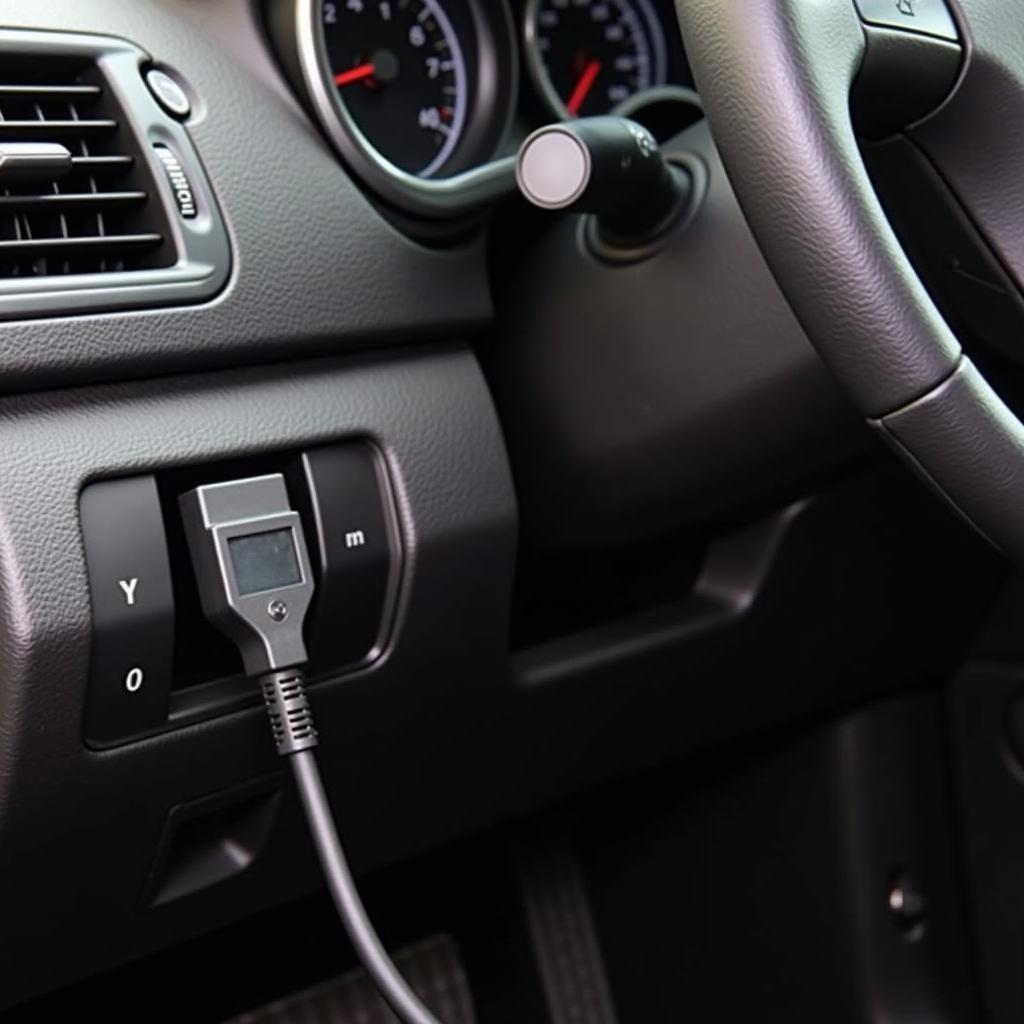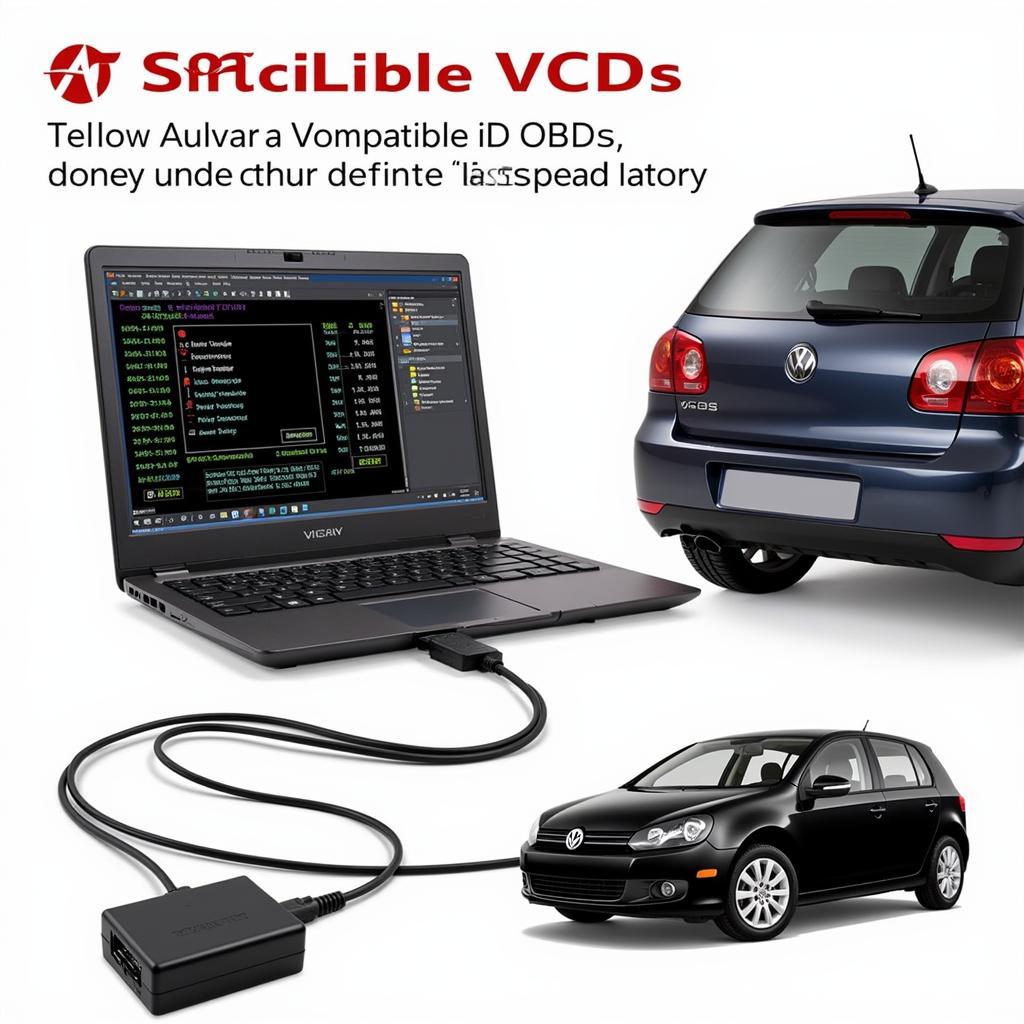VCDS, the go-to diagnostic software for Volkswagen, Audi, Seat, and Skoda vehicles, is primarily designed for Windows. However, many Mac users, from DIY enthusiasts to professional mechanics, want to harness its power. This guide will explore how to effectively use VCDS on a Macbook, covering various methods, common challenges, and best practices.
Connecting your VCDS interface to a Macbook requires a few extra steps compared to a Windows PC. The most common approach involves running a virtual Windows environment on your Mac. This allows you to install and run the Windows version of VCDS as if you were using a Windows computer. There are several popular virtualization software options available, such as Parallels Desktop, VMware Fusion, and VirtualBox. Each has its own pros and cons regarding performance, ease of use, and cost. Another method involves using Boot Camp, which allows you to install Windows directly on your Mac, giving you native Windows performance. However, this method requires partitioning your hard drive and rebooting your Mac into Windows each time you want to use VCDS. For some, this can be a less convenient solution. You can find more information about using VCDS on a Mac in our dedicated guide: vcds for mac.
Choosing the Right Virtualization Software for VCDS
Selecting the right virtualization software depends on your needs and budget. Parallels Desktop is generally considered the most user-friendly and offers seamless integration with macOS, but it comes at a premium price. VMware Fusion offers a balance of performance and affordability, making it a popular choice among professionals. VirtualBox is a free and open-source option that works well for basic tasks but might lack the performance required for more demanding applications. Researching and comparing these options is crucial for a smooth VCDS experience on your Macbook. Understanding how each software manages resources, like RAM and processing power, will help you make an informed decision. More details on using VCDS specifically on a Macbook can be found here: vcds for macbook.
Setting up Your Virtual Machine for VCDS
Once you’ve chosen your virtualization software, the next step is to create a virtual machine and install Windows. This process typically involves downloading a Windows ISO file and following the software’s instructions to create the virtual machine. You’ll need to allocate sufficient resources to the virtual machine, especially RAM and hard drive space, to ensure smooth VCDS operation. It’s essential to install the correct drivers for your VCDS interface within the virtual machine. This ensures that the software can communicate with your vehicle’s onboard diagnostics system.
Troubleshooting Common VCDS Issues on Macbook
Even with a proper setup, you might encounter some issues when using VCDS on a Macbook. One common problem is connection issues between the VCDS interface and the virtual machine. This can often be resolved by ensuring that the USB port is correctly mapped to the virtual machine. Another issue is slow performance, which can be mitigated by allocating more resources to the virtual machine or by optimizing the virtual machine settings. Sometimes, the VCDS software might not recognize the interface. In such cases, reinstalling the drivers within the virtual machine can often resolve the problem. If you’re looking for a lightweight version, check out: vcds lite mac.
Best Practices for Using VCDS on a Macbook
To get the best performance and avoid potential problems, consider these best practices: Always use a genuine Ross-Tech VCDS interface. Counterfeit interfaces can cause unreliable communication and potentially damage your vehicle’s electronics. Keep your virtualization software and Windows installation up-to-date. This ensures compatibility and security. Close unnecessary applications running on your Mac and within the virtual machine to free up resources for VCDS. Regularly back up your virtual machine to prevent data loss in case of software or hardware issues. A detailed guide on running VCDS on Mac can be found here: how to run vcds on mac.
Utilizing VCDS Features on Your Macbook
Once your VCDS is set up correctly, you can access its full range of features, including reading and clearing fault codes, logging data, performing adaptations, and coding control modules. Familiarizing yourself with the software’s interface and functionality will allow you to effectively diagnose and troubleshoot issues with your vehicle. VCDS provides detailed information about each fault code, helping you pinpoint the root cause of the problem. Learn more about using VCDS on Mac here: vcds mac.
In conclusion, using VCDS on a Macbook is achievable and provides a powerful diagnostic solution for VAG vehicle owners. By following the steps outlined in this guide and adhering to best practices, you can effectively leverage VCDS to diagnose and resolve issues with your vehicle.
FAQ
- Can I use a cracked version of VCDS on my Macbook? No, using counterfeit software is illegal and can be detrimental to your vehicle.
- Is it better to use Boot Camp or a virtual machine for VCDS? Both methods work, but a virtual machine is generally more convenient.
- What are the minimum system requirements for running VCDS on a Macbook? This depends on the chosen virtualization software, but generally, a relatively recent Macbook with adequate RAM and storage is recommended.
- Can I update the firmware of my VCDS interface on a Macbook? Yes, you can update the firmware within the virtual machine just as you would on a Windows PC.
- What should I do if my VCDS interface is not recognized by the virtual machine? Check the USB mapping and reinstall the drivers within the virtual machine.
- What are the benefits of using VCDS over generic OBD-II scanners? VCDS offers much more in-depth diagnostics and functionality specific to VAG vehicles.
- Where can I find more information about using VCDS? Ross-Tech’s official website is an excellent resource.
For further assistance, contact us via Whatsapp: +1 (641) 206-8880, Email: [email protected] or visit us at 276 Reock St, City of Orange, NJ 07050, United States. We offer 24/7 customer support.



